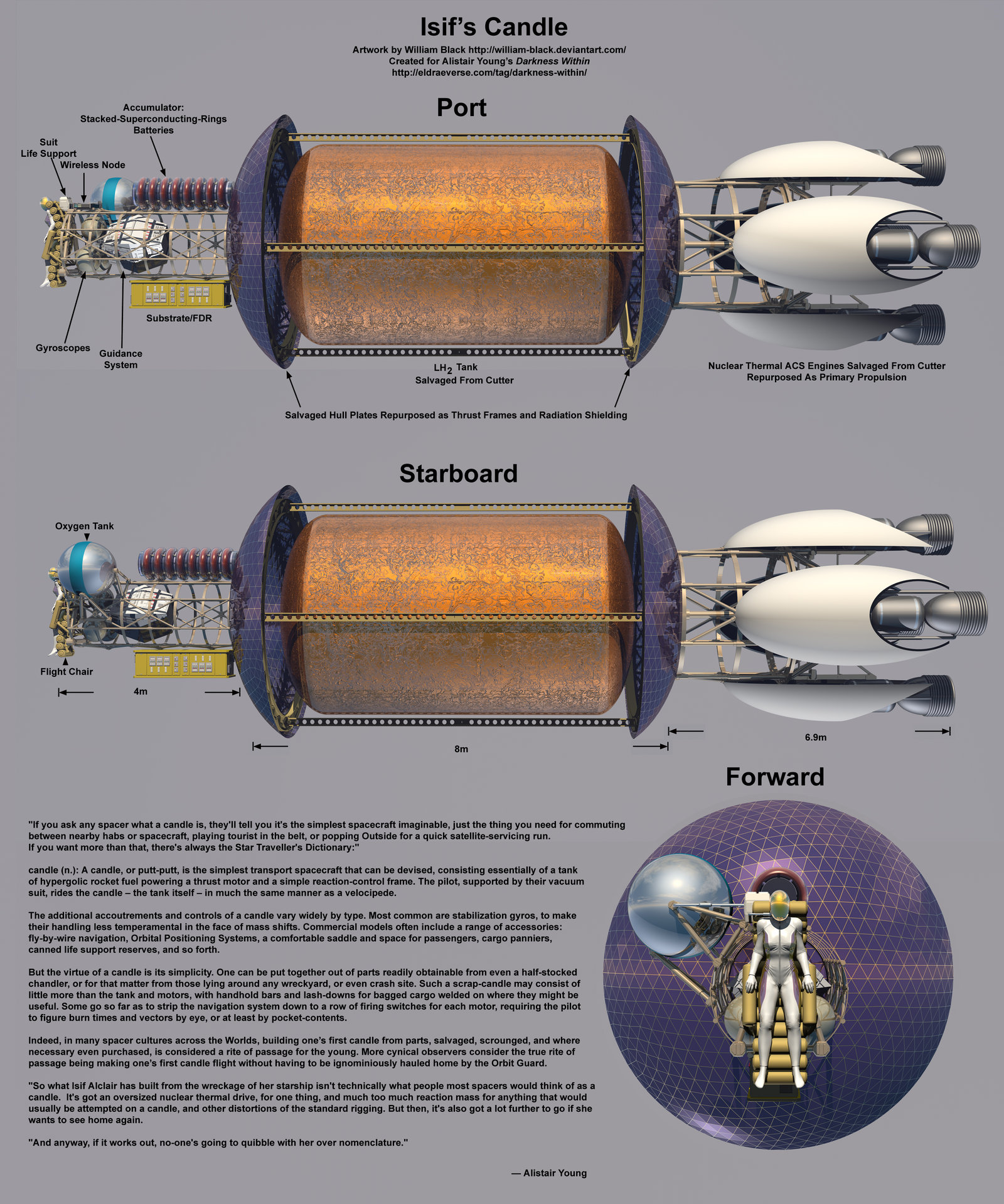Something I was reminded of – by some of the comments here (…There Is Only Awesomeness) that suggest an assumption of ground combat as a default – is the surprising emptiness of space in many settings.
(I’m looking at you, Star Trek, where even the freakin’ capital of the Federation, Sol System itself, may have only one starship or even none at all present at any given time. Star Wars is usually better about this, but even then, there’s a lot less traffic than you might expect. And so on, and so forth and forth and forth.)
This is, needless to say, not the case in the Eldraeverse, in any reasonably developed star system.
Orbital space, in particular, is insanely crowded. (See the quote from Manna, here.) There’s the orbital defense grid, of course, but even leaving that aside, there are commsats, navsats, weather satellites (both monitoring and control), orbital mirrors, remote sensors of various kinds, space telescopes, junk sweepers, solar power satellites…
And then there are the orbital stations. Highports, research stations, orbital factories, skyfarms, residences (from city-sized habitats to personal mansions), skymalls, warehouses, control centers for some of the satellite constellations, data havens, propellant depots, autochandleries…
And all the OTVs, commuterspheres, satellite oilers, resupply skiffs, dock-n-snacks, and other small craft bustling about between them even before you get to regular traffic like orbital shuttles, tugs, commercial inbounds, commercial outbounds, the Watch Constabulary’s Orbit Guard…
Basically, near-planetary space is an ever-changing maze. And that’s true for pretty much every developed planet or moon in the system, to one degree or another.
That’d be bad enough if the universe worked on the kind of FTL where you can drop out of hyperspace close to planets. But since it doesn’t, then there’s the rest of the system, which isn’t by any means that crowded (it is, after all, much bigger), but which does still contain —
Long-range commsats and navsats, space weather satellites (and, close in, stellar husbandry arrays), bigger space telescopes, power-beam relays, drift stations (more farms, factories, habitations, etc., for people who like a little more distance), inhabited rocks likewise, transshipment stations for through traffic that doesn’t want to have to go downwell, smelterships, prospectors, rock pushers, comet herders, commercial traffic inbound and outbound, the Watch Constabulary’s Stellar Guard, stargates with their associated space traffic control and defense stations, more propellant depots and autochandleries…
…and, oh yes, the Imperial Navy, which in a valuable core system will mean an actual system garrison, but which even in a small, new colony will imply a system picket. With forward-deployed sensor platforms and AKVs thrown in, even by the minimal one-ship system picket.
All of whom are running their own local-space monitoring systems for space-traffic-control purposes, at least, and who are themselves being watched by SysCon’s own big track-everything-in-the-system arrays.
Which is to say, tl;dr, that your chances of making a successful approach from deep space to your target planet and making a successful landing without being detected are functionally zero, and your chances of doing it without being engaged are within delta of zero. To use an analogy, it’d be like trying to fly a Predator drone from mid-Atlantic and park it in the middle of the tarmac at Chicago O’Hare, past everyone in between, at the height of Thanksgiving traffic. Without being noticed.
Trying to do it with a viable planetary invasion force is like doing the same thing, except that instead of a Predator drone, you’re doing it with the battleship Iowa.
Which, to bring it back to comment-relevancy, means there ain’t no ground combat of any size without enough space battles to brute-force your way past that lot first, and there’s definitely no ground combat that the defenders don’t have all the time that they need to get set up for. Period.

